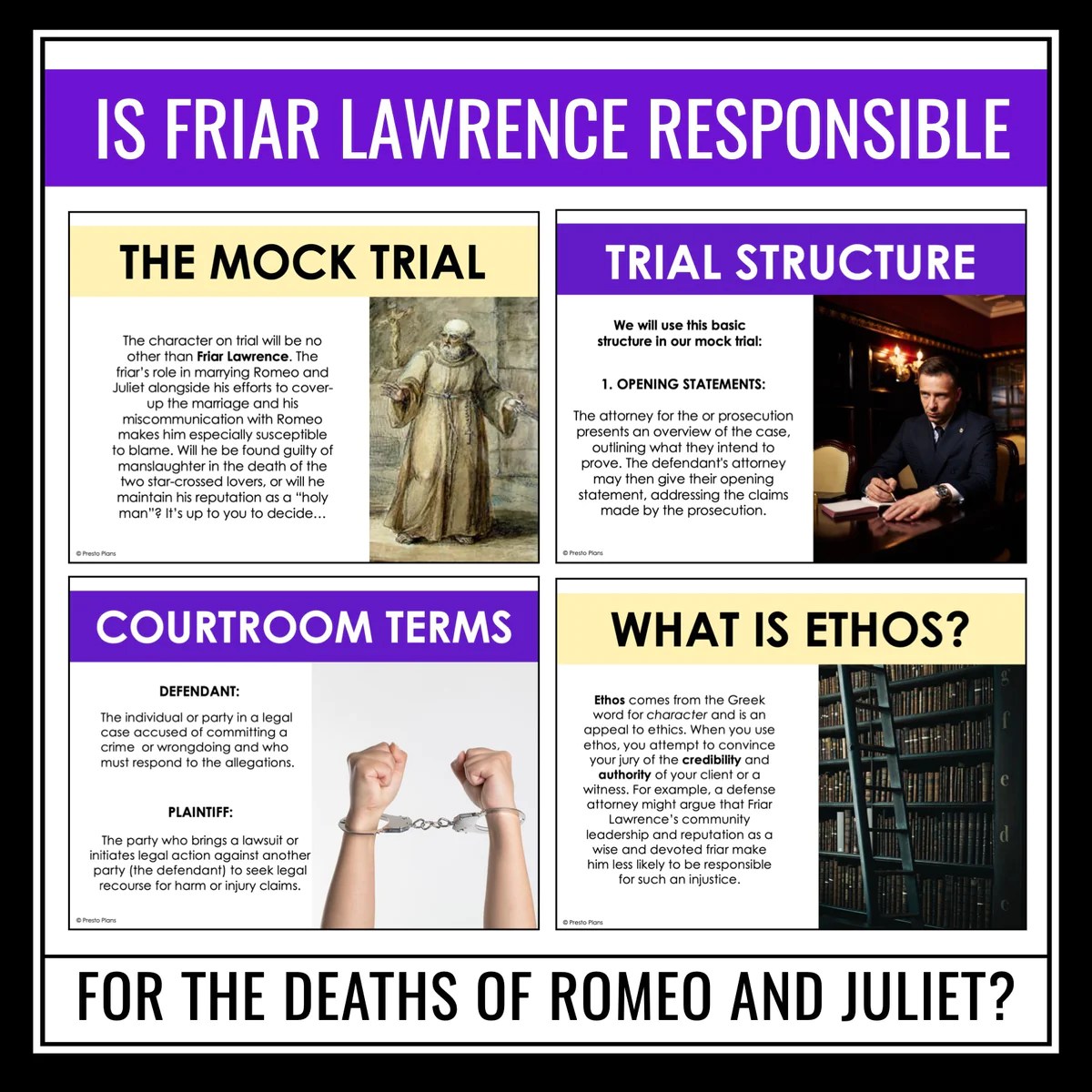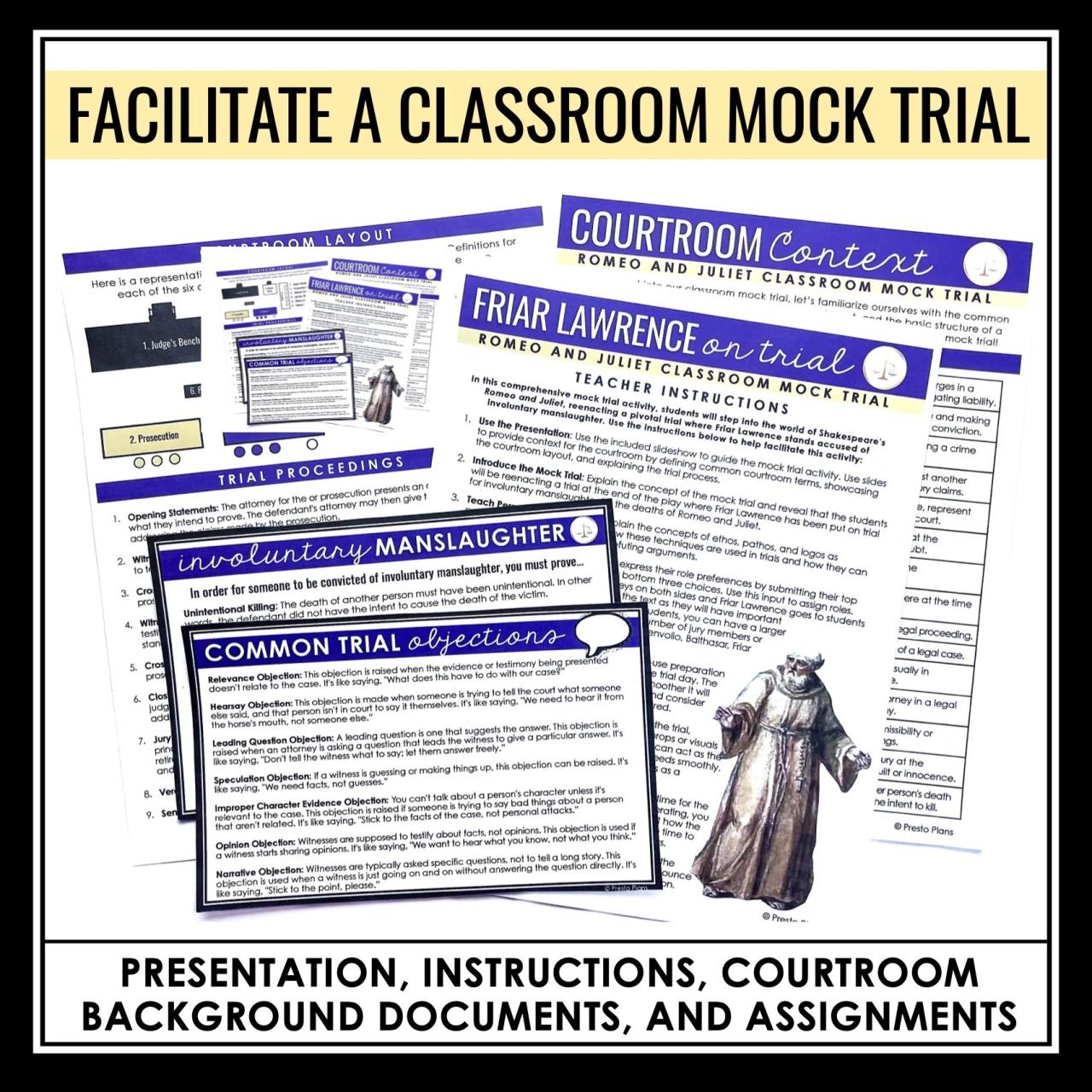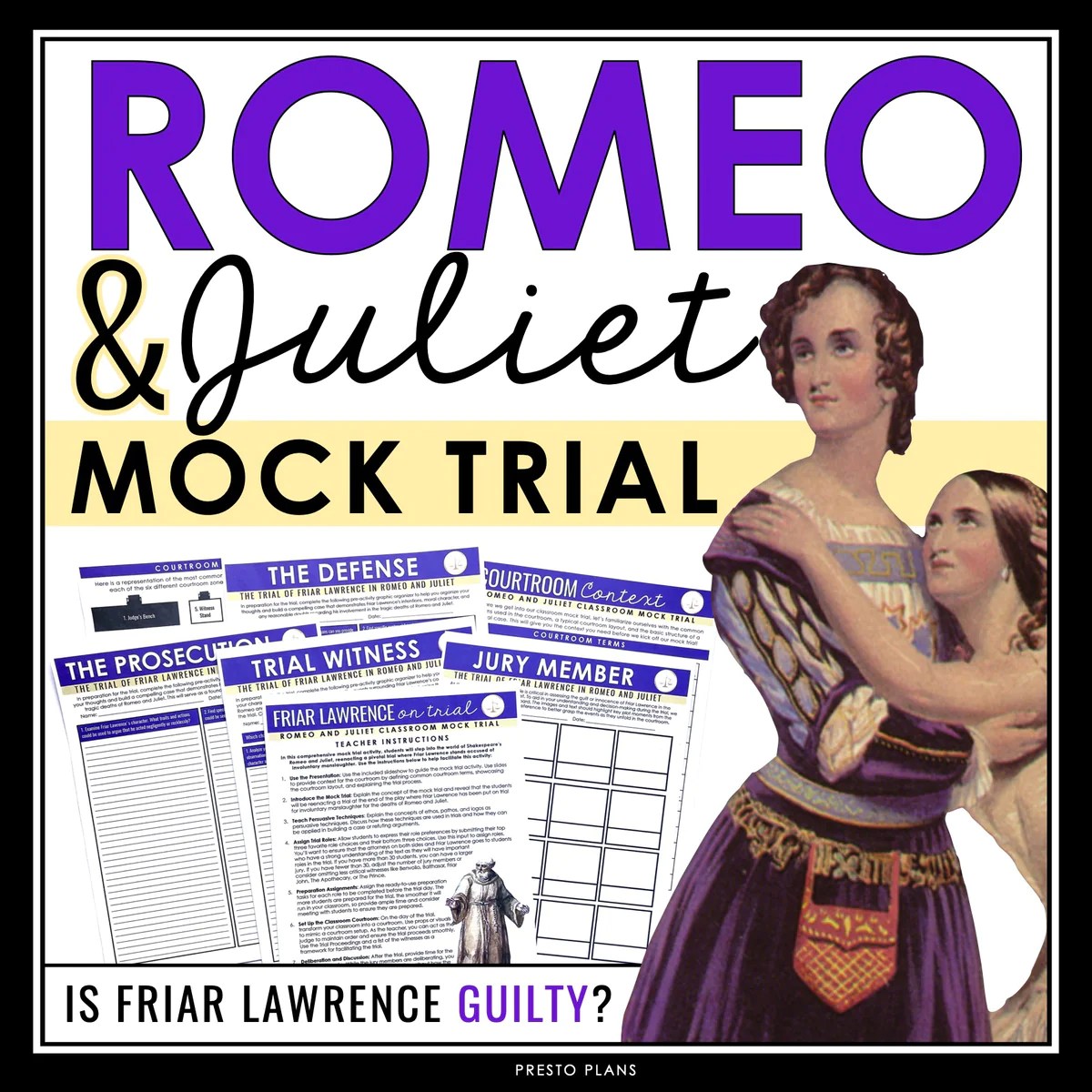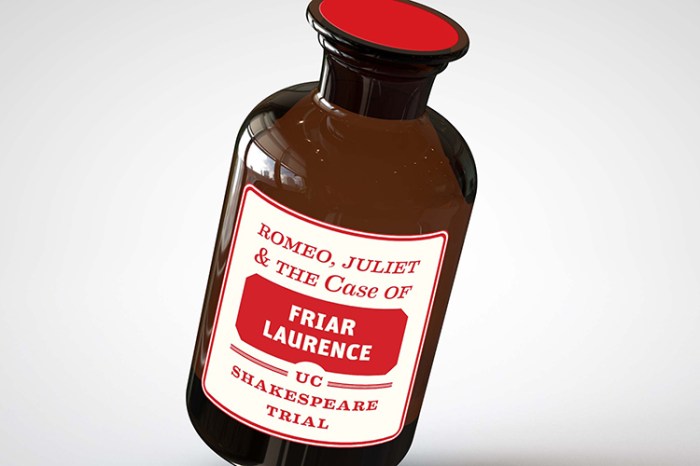As the Romeo and Juliet mock trial takes center stage, this opening passage beckons readers into a world crafted with meticulous detail and vivid prose, promising a reading experience that is both immersive and thought-provoking.
Prepare to delve into the depths of this timeless tale, where love blossoms amidst family feuds and tragedy unfolds with heart-wrenching inevitability.
Characters

Romeo and Juliet are the central characters in Shakespeare’s play of the same name. They are both young, passionate, and impulsive, and their love for each other leads to their tragic deaths.
Romeo is a member of the Montague family, while Juliet is a member of the Capulet family. The two families are feuding, and their hatred for each other makes it impossible for Romeo and Juliet to be together.
Romeo
- Romeo is a young man who is passionate, impulsive, and romantic.
- He is also a skilled swordsman and a talented poet.
- Romeo’s personality is driven by his emotions, and he often acts without thinking.
Juliet
- Juliet is a young woman who is intelligent, beautiful, and compassionate.
- She is also a strong-willed and independent woman.
- Juliet’s personality is driven by her intelligence and her desire to live a life of her own choosing.
The relationship between Romeo and Juliet is one of the most famous love stories in history. Their love for each other is passionate and intense, and it is ultimately stronger than the hatred between their families.
Plot

Romeo and Juliet is a tragedy written by William Shakespeare. It tells the story of two young lovers from feuding families, the Montagues and Capulets. Despite their families’ hatred for each other, Romeo and Juliet fall deeply in love. However, their love is doomed from the start, and they both end up dying.
The main events of the play are as follows:
- Romeo and Juliet meet at a party and fall in love.
- They get married in secret with the help of Friar Laurence.
- Romeo kills Tybalt, Juliet’s cousin, in a duel.
- Romeo is banished from Verona.
- Juliet takes a potion that makes her appear dead.
- Romeo returns to Verona and finds Juliet apparently dead.
- Romeo kills himself.
- Juliet wakes up and finds Romeo dead.
- Juliet kills herself.
Key Conflicts
The key conflicts in the play are:
- The feud between the Montagues and Capulets.
- The love between Romeo and Juliet.
- The fate of the lovers.
Turning Points
The key turning points in the play are:
- When Romeo and Juliet meet at the party.
- When Romeo kills Tybalt.
- When Juliet takes the potion.
- When Romeo finds Juliet apparently dead.
- When Romeo kills himself.
- When Juliet kills herself.
Plot Structure
The plot structure of Romeo and Juliet is a classic tragedy. It follows the five-act structure, with a rising action, climax, falling action, and resolution.
The rising action introduces the characters and the conflict. The climax is the point of highest tension, when Romeo and Juliet die. The falling action shows the consequences of their deaths. The resolution is the final scene, when the Montagues and Capulets reconcile.
The plot structure contributes to the play’s tragic outcome by creating a sense of inevitability. The audience knows that Romeo and Juliet are doomed from the start, and the play’s events only serve to confirm this.
Themes: Romeo And Juliet Mock Trial

Shakespeare’s Romeo and Julietexplores profound themes that resonate with audiences across time.
The play delves into the destructive power of love and hate. The intense passion between Romeo and Juliet is juxtaposed with the bitter feud between their families, the Montagues and Capulets. This contrast highlights the irrationality of hatred and the devastating consequences it can have on individuals and society.
Love’s transformative power
Romeo and Juliet’s love is depicted as a transformative force. It inspires them to defy societal norms and risk everything for their happiness. Their love also brings about a shift in their perspectives, as they learn to see beyond their family’s prejudices.
The dangers of hasty decisions
The play also explores the perils of making hasty decisions. Romeo’s impulsive nature and Juliet’s desperation lead to a series of unfortunate events that culminate in their tragic deaths. The play suggests that it is crucial to carefully consider the consequences of our actions before taking them.
Participating in a Romeo and Juliet mock trial is an exciting way to engage with the play. To fully immerse yourself in the experience, you’ll need a strong vocabulary. Our vocabulary level f unit 4 provides the perfect foundation. By mastering these words, you’ll be able to understand the nuances of the characters’ dialogue and deliver a compelling performance during the trial.
The relevance of Romeo and Juliet to contemporary audiences
Despite being written over four centuries ago, Romeo and Julietremains relevant to contemporary audiences. The play’s themes of love, hate, and the consequences of hasty decisions are universal and timeless. The play continues to captivate and resonate with audiences, reminding us of the importance of tolerance, understanding, and the power of love.
Language and Style
Shakespeare’s use of language in Romeo and Juliet is a testament to his unparalleled literary prowess. Through vivid imagery, evocative metaphors, and a mastery of wordplay, he paints a vivid and emotionally resonant tapestry that transports the audience into the heart of the play’s tragic love story.
Metaphors and Similes
Shakespeare’s use of metaphors and similes breathes life into the play’s characters and themes. For instance, Romeo compares Juliet to the sun, declaring, “But soft! What light through yonder window breaks? / It is the east, and Juliet is the sun.”
This metaphor not only conveys Juliet’s radiant beauty but also foreshadows the destructive passion that will ultimately consume them both.
Imagery, Romeo and juliet mock trial
Shakespeare’s vivid imagery appeals to all five senses, creating a sensory experience that immerses the audience in the play’s world. In the famous balcony scene, Romeo describes Juliet’s eyes as “two of the fairest stars in all the heaven,” evoking a sense of celestial wonder and beauty.
Emotional Impact
The interplay of metaphors, similes, and imagery contributes significantly to the play’s emotional impact. Shakespeare’s skillful use of language elicits a wide range of emotions, from the soaring joy of young love to the depths of despair and sorrow.
Adaptations

Romeo and Juliet has been adapted into numerous forms of media over the centuries, including stage productions, films, television shows, operas, and musicals. These adaptations have interpreted the play’s characters, plot, and themes in diverse ways, reflecting the changing cultural and social contexts in which they were created.
One of the most famous adaptations of Romeo and Juliet is Franco Zeffirelli’s 1968 film. This adaptation is known for its lush visuals, romantic atmosphere, and faithful adherence to the play’s text. Zeffirelli’s film has been praised for its beauty and its ability to capture the timeless love story at the heart of the play.
Film Adaptations
Film adaptations of Romeo and Juliet have often taken liberties with the play’s plot and characters. For example, Baz Luhrmann’s 1996 film Romeo + Juliet is set in a modern-day urban setting and features a more violent and stylized interpretation of the play.
Luhrmann’s film has been criticized for its departures from the original text, but it has also been praised for its energy and its ability to connect with a contemporary audience.
Other notable film adaptations of Romeo and Juliet include George Cukor’s 1936 version, which is known for its sumptuous costumes and sets, and Kenneth Branagh’s 1996 version, which is known for its star-studded cast and its faithful adaptation of the play’s text.
Stage Adaptations
Stage adaptations of Romeo and Juliet have also been numerous and varied. Some stage adaptations have sought to recreate the play’s original Elizabethan setting, while others have updated the setting to a more modern context. For example, the Royal Shakespeare Company’s 2016 production of Romeo and Juliet was set in a modern-day high school, and the characters used social media to communicate.
Stage adaptations of Romeo and Juliet have also experimented with different interpretations of the play’s characters. For example, some productions have cast women in the role of Romeo, and others have cast actors of color in the roles of the Montagues and Capulets.
Reasons for Enduring Popularity
Romeo and Juliet has remained popular for centuries because it is a timeless story of love, loss, and tragedy. The play’s characters are relatable and sympathetic, and its themes of love, hate, and destiny are universal. Romeo and Juliet is also a well-written play with beautiful language and memorable characters, which makes it a pleasure to read and watch.
Essential FAQs
What is the significance of the feud between the Montagues and Capulets?
The feud serves as a catalyst for the tragic events that follow, creating an insurmountable barrier between Romeo and Juliet and ultimately leading to their untimely demise.
How does Shakespeare’s use of language contribute to the play’s emotional impact?
Shakespeare’s masterful use of metaphors, similes, and imagery creates a vivid and evocative world that immerses the audience in the characters’ emotions and experiences.
Why has Romeo and Juliet remained popular for centuries?
The play’s universal themes of love, loss, and the human condition resonate with audiences of all ages, making it a timeless masterpiece that continues to be adapted and performed.